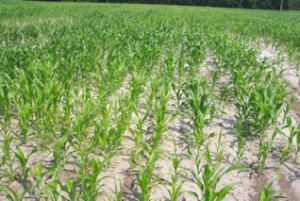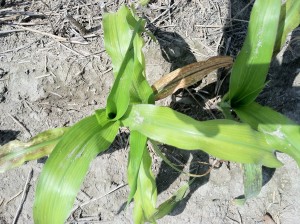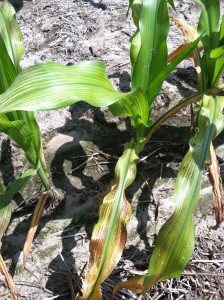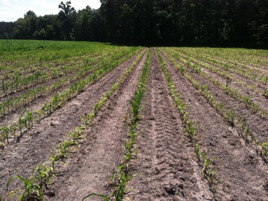Multiple Problems Will Complicate Corn Plant Problem Diagnosis
go.ncsu.edu/readext?412161
en Español / em Português
El inglés es el idioma de control de esta página. En la medida en que haya algún conflicto entre la traducción al inglés y la traducción, el inglés prevalece.
Al hacer clic en el enlace de traducción se activa un servicio de traducción gratuito para convertir la página al español. Al igual que con cualquier traducción por Internet, la conversión no es sensible al contexto y puede que no traduzca el texto en su significado original. NC State Extension no garantiza la exactitud del texto traducido. Por favor, tenga en cuenta que algunas aplicaciones y/o servicios pueden no funcionar como se espera cuando se traducen.
Português
Inglês é o idioma de controle desta página. Na medida que haja algum conflito entre o texto original em Inglês e a tradução, o Inglês prevalece.
Ao clicar no link de tradução, um serviço gratuito de tradução será ativado para converter a página para o Português. Como em qualquer tradução pela internet, a conversão não é sensivel ao contexto e pode não ocorrer a tradução para o significado orginal. O serviço de Extensão da Carolina do Norte (NC State Extension) não garante a exatidão do texto traduzido. Por favor, observe que algumas funções ou serviços podem não funcionar como esperado após a tradução.
English
English is the controlling language of this page. To the extent there is any conflict between the English text and the translation, English controls.
Clicking on the translation link activates a free translation service to convert the page to Spanish. As with any Internet translation, the conversion is not context-sensitive and may not translate the text to its original meaning. NC State Extension does not guarantee the accuracy of the translated text. Please note that some applications and/or services may not function as expected when translated.
Collapse ▲Frequently N.C. Cooperative Extension is sought to assist by examining problem areas within field crop production. Often, plants do not always provide a single distinct, common diagnostic symptom or may have symptoms for multiple problems within one site. Thus soil samples, nematode samples, and tissue samples are often submitted to the North Carolina Department of Agriculture & Consumer Services Agronomic Division for analysis to confirm or identify the problem. In some cases, plant specimens are also sent to the NCSU Plant Disease & Insect Clinic for disease diagnosis. The point is that visual symptoms alone do not always provide strong evidence for proper diagnosis, especially when there are multiple causes.
As example, the corn field image (left) shows corn plants with dark, green normal appearance along with smaller, pale green to yellow plants within the same row. Closer examination reveals a generally pale green to yellow plant, slight interveinal chlorosis and bottom leaves with purplish margin or necrotic edges. (right)
Slightly further plants show similar symptoms as described previously but with a greater degree of yellowing. Also within this area, interveinal chlorosis is common, plants growth is uneven, and the plant stem and some leaves have margin that show slight necrosis and purplish appearance (Right). Root growth for all areas examined thus far is fair to good.
Examination of plant within only a few rows further reveals plants that have all of the above symptoms but plant size is significantly smaller. This abrupt change in plant size occurs in a somewhat isolated area. Root growth of plants within this small area is poor. The roots are small and shallow. (Bottom right)
In this particular example, it is suspected that low soil nitrogen is a problem for all of this field. However, low N is not responsible for the leaves with both a purple leaf margin and interveinal chlorosis. Low soil pH is the probable cause of these symptoms. The general yellow appearance of many plants is an indication of low sulfur within the plant. Plants with slight yellowing and interveinal chlorosis indicate potential manganese deficiency. Thus, the potential causes of all plant symptoms within this field have potentially been explained except for the dramatically smaller plants. Since the plants within this area show symptoms related to all of these deficiencies in addition to poor root development, it is suspected that a nematode problems exists within this area.
In this particular case, all visual symptoms were confirmed by lab results from soil and nematode samples. Excessive rainfall led to leaching of nitrogen and sulfur. The soil pH was very low (ranged from soil pH of 4.5-4.9 rather than a desirable range of soil pH 6.0-6.2) and the nematode stubby root was common. Furthermore, the small isolated area with much smaller plants is the result of the presence of the Sting nematode.
This example demonstrates that multiple problems often exists even within a small area. Correcting for only one problem will not remedy the undesirable poor growth. Regrettably, in this case, even correcting all nutrient deficiencies is not likely to have a huge impact upon growth due to the low soil pH and nematode problems that will very likely severely limit plant growth. (Proper soil pH and nematode management should be addressed prior to planting field crops).
The plant-soil relationship is a complex issue. The visual symptom exhibited by the plants often provide some indication of a problem but sometimes multiple problems may exists. Thus, prior to any corrective action, one should positively identify the problem(s). If assistance is needed, contact your local N.C. Cooperative Extension county center.
Email the author : mike_carroll@ncsu.edu








